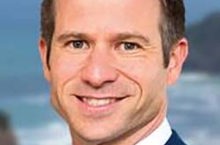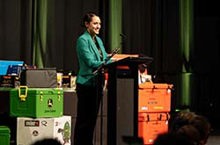
The Forest Owners Association (FOA) says the cost recovery scheme for the Emissions Trading Scheme (ETS) announced last month is another government disincentive to plant forests, just when they are most needed.
FOA President, Grant Dodson, says the huge jump to a more than $14 million a year cost recovery formula to be imposed by the government is neither reasonable nor equitable.
“It’s important to realise that this is a $14m administration charge which sits over and above activity charges. They are also increasing, including registration, returns and simple basic form filling activities.
“The ETS is for a public benefit. It has no basis for existing other than to store carbon from the atmosphere to combat climate change and that is of benefit to all New Zealanders.
“A better description of something designed to advance the public good would be hard to find. Suggesting that those who have been encouraged to participate should now fund the lion’s share of this public good policy instrument does not recognise its sole purpose.
“New Zealand’s emitters are responsible for 77 million tonnes of carbon dioxide, or equivalent, per year. They aren’t charged anything for a scheme which would be unnecessary without their emissions. They should be contributing.
“Imposing these new massive levels of charges for administration costs on foresters for the scheme is unreasonable. Most plantation forests are not in the ETS. The carbon locked in them provides a public good in sequestering more than 15 million tonnes of carbon dioxide a year, for which they receive no reward.”
Mr Dodson says foresters had no say in setting up a needlessly complicated scheme.
“It’s open-ended, there are cross subsidies. Bigger foresters have to pay more, not because they use more ETS services, but simply because a crude annual charge of $30.25 per hectare formula makes the MPI bookwork easier.”
He says many foresters are a number of years away from harvest and will not be earning any income to pay the cost recovery until potentially decades in the future.
“I’ve just heard from one typical forester. He has a 600-hectare block. He gets no services from the ETS administration – just an annual charge of $18,000 a year. He’s wondering why he’s in the ETS.”
Mr Dodson says foresters are also concerned that they will be paying to run a system which is currently being reviewed with the possibility that the scheme will effectively be abolished.
“We are being forced to pay huge increases into a scheme which the current government has presented options to disconnect.”
Farm Forestry Association President, Neil Cullen, says small scale woodlot owners are also facing huge increases, with new charges for 22 different ETS services.
“If someone transfers their ETS participation to someone else, then they will be charged $990 just for entering a new name into the system. How much work does that take?”
“These charges will be just another disincentive to plant trees. Our woodlots provide the well-known benefits of carbon sequestration. But so often they are areas of exotics surrounded and intertwined with a range of indigenous trees. And that makes for a lot of biodiversity in our landscape.”










